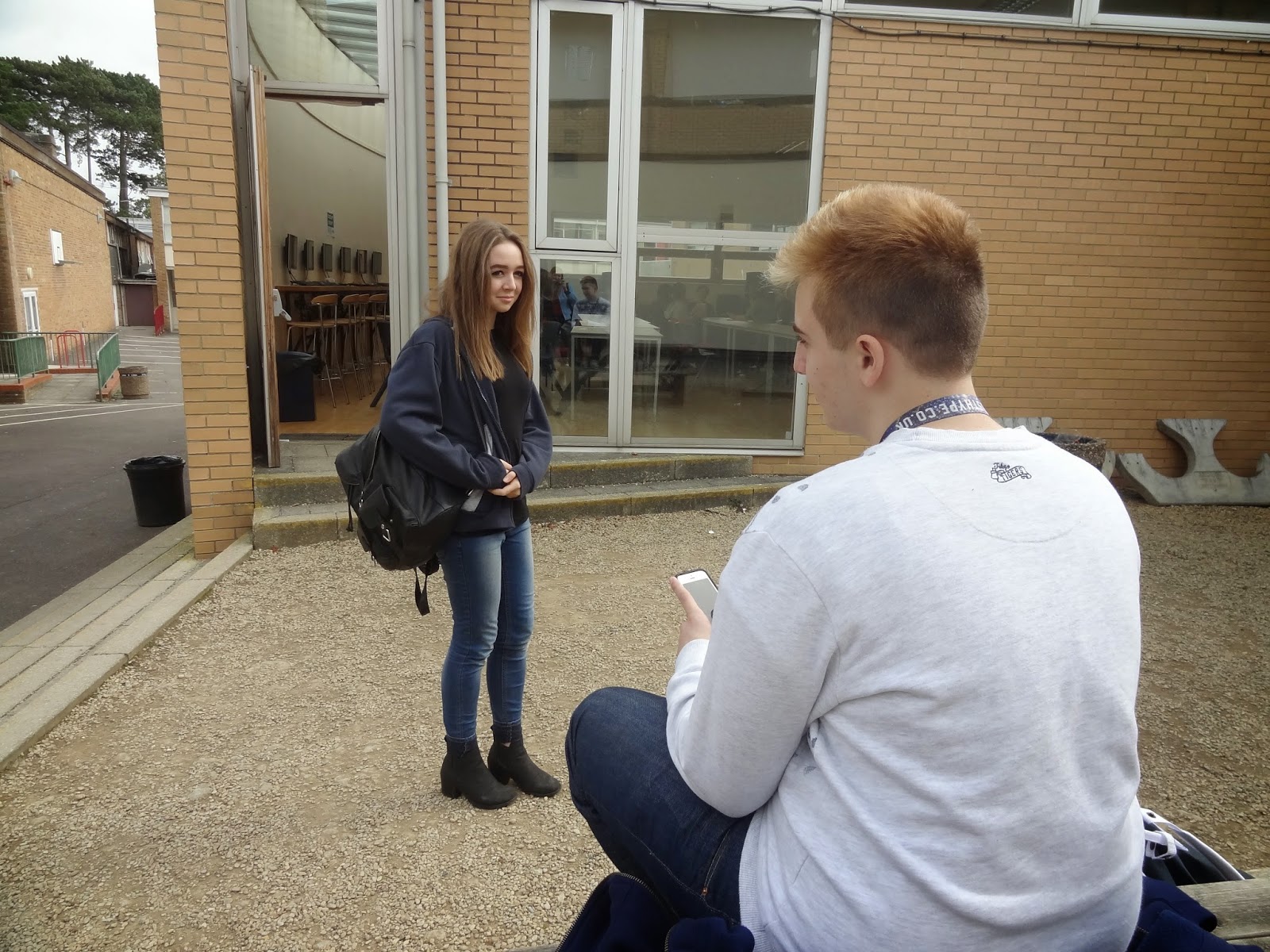Preliminary exercise:
This is a task that precedes your main task and is a chance for you to practise your skills without the pressure of it counting towards your final grade:Continuity task involving filming and editing a character opening a door, crossing a room and sitting down in a chair opposite another character, with whom she/he then exchanges a couple of lines of dialogue. This task should demonstrate match on action, shot/reverse shot and the 180-degree rule.
 |
| Shot 2: Long shot Shows Ella walking up some steps. I used a long shot to show more of the surroundings so the viewer gains a clearer idea of where the characters are and what the context might be. |
 |
| Shot 4: Over the shoulder, long shot. Shows Ella walking again, but she has move closer. This once again shows the distance between the two characters and the surroundings to the viewer. |
 |
| Shot 22 and 23: Close up Ella grabs her bag ready to leave. The use of just close ups for shots 22 and 23 increase the pace of the scene and encourage the viewer to concentrate more on the action.  |
 |
| Shot 24: Mid to long shot Shows both characters getting up about to leave. The use of a mid to long shot here means that the viewer can clearly see the movement of both characters at the same time. |
 |
| Shot 25: Long shot Showing them walking away. This shot was used to show the body language of the two characters as they walk away from and to show the distance between them and the table now. |
 |
| Shot 26: Long shot Showing them continuing to walk away. I used a long shot for this shot as the viewer can once again see the distance now between them and the table. |






















No comments:
Post a Comment